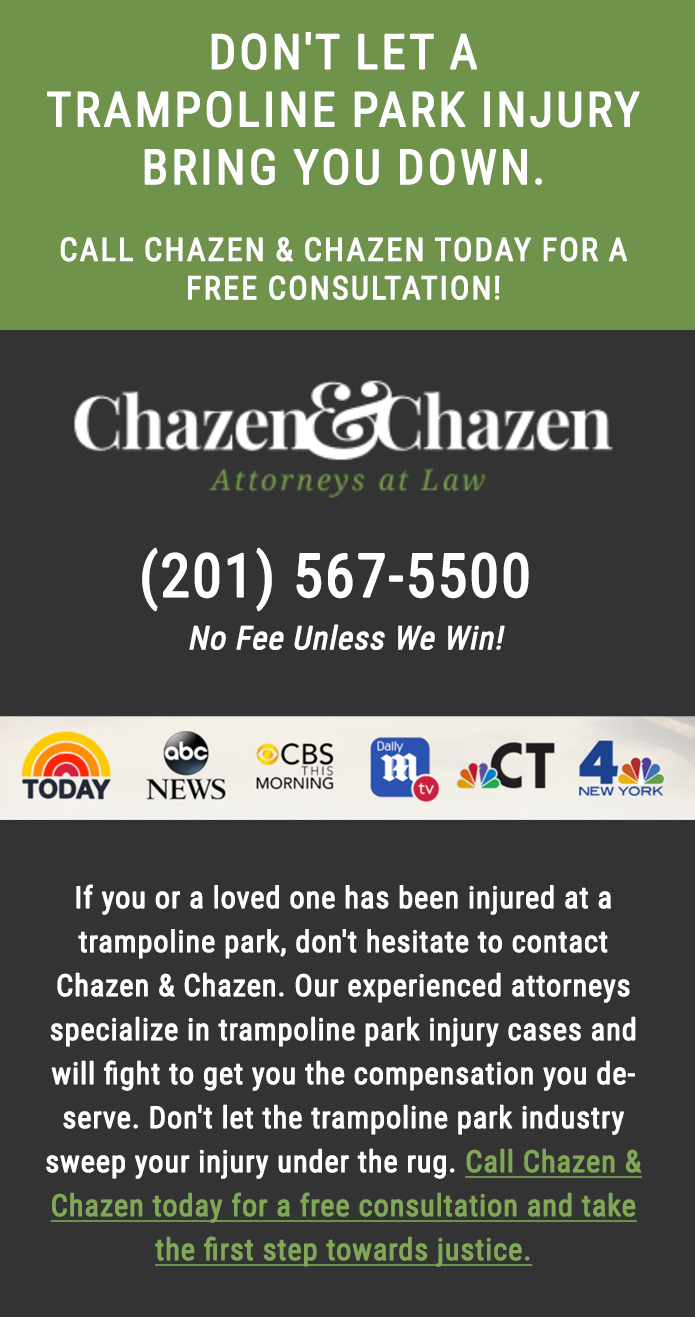Trampoline parks have become increasingly popular in recent years, but many customers are unaware of the hidden dangers inherent in their design, operation, and features. These dangers include:
Children under 6 should not be allowed on trampolines. Medical groups, the Consumer Product Safety Commission (CPSC), and even the warnings on backyard trampolines all advise against allowing children under 6 to use trampolines. However, the policy of trampoline parks such as Sky Zone is often “If you can walk, you can jump.” This policy has led to trampoline park injuries in young children.
The trampoline beds at trampoline parks are thick, stiff, surrounded by 100 heavy springs, and sealed, creating a diaphragm effect. This is different from the less tensioned and perforated trampolines used in gymnastics and in backyards. The trampoline beds vary in tension from the center to the sides and recoil with tremendous bone-breaking speed and force. This can lead to trampoline park injuries.
Trampolines at trampoline parks are interconnected, and jumpers are continually at risk from other jumpers who may jump on the same trampoline and cause a collision or double jump. This can lead to injuries from the recoil or snap back of the trampoline bed.
Trampoline parks do not offer skill assessment or instruction. Their employees are prohibited from offering any help on how to jump, leaving it up to the jumpers to know their skill level. The average jumper has no knowledge of how to perform basic skills, let alone what is beyond their skill level.
Advanced Skills: Advanced trampoline jumping maneuvers are especially dangerous for the non-athletic and untrained jumper. The high risk of trampoline park injury when exceeding one’s skill level is cautioned against by the USAG, ASTM, CPSC, and even the IATP in its never published/self-suppressed 2015 Risk Management Manual.
- Aerial Maneuver – Inverting the body (flips/somersaults), risk of death or paralysis from landing on head/neck.
- Jumping Horizontally from Trampoline to Trampoline – The trampoline is propelling a jumper sideways making it difficult to jump in the center of the trampoline and control landings. Resulting in off-balance landings. Resulting in contacting harder areas of trampoline bed around the perimeter. Resulting in contacting the edge of the padding, the thin padding covering springs, chains, steel frames, steel posts. Causing spontaneous fractures of feet, ankles, leg bones, hip joints and the tearing of ligaments and tendons in the joints.
- Jumping Off of Sidewalls – The change in body position makes it difficult to land safely on the adjacent horizontal trampoline.
In conclusion, trampoline parks can be a fun and exciting activity, but it is important to be aware of the potential dangers. By following safety guidelines and rules, and by being aware of the potential risks, you can help ensure that your experience at a trampoline park is safe and enjoyable. Parents should consider the risks and make informed decisions about whether or not to allow their children to visit trampoline parks.”

